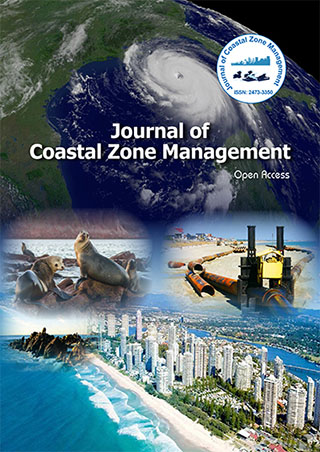Indexed In
- SafetyLit
- RefSeek
- Hamdard University
- EBSCO A-Z
- OCLC- WorldCat
- Publons
Useful Links
Share This Page
Journal Flyer

Open Access Journals
- Agri and Aquaculture
- Biochemistry
- Bioinformatics & Systems Biology
- Business & Management
- Chemistry
- Clinical Sciences
- Engineering
- Food & Nutrition
- General Science
- Genetics & Molecular Biology
- Immunology & Microbiology
- Medical Sciences
- Neuroscience & Psychology
- Nursing & Health Care
- Pharmaceutical Sciences
Detection of El Nino and decadal variability of Arabian Sea (west coast), surface conditions for the year 1966-2013: Extended reconstruction based on stable isotope record from Lakshadweep corals
3rd International Conference on Coastal Zones and Oceanography
May 18-19, 2018 Singapore
Fousiya A A
Anna University, India
Posters & Accepted Abstracts: J Coast Zone Manag
Abstract:
Stable isotope records of δ18O/δ13C obtained from corals have been used as a potential proxy to investigate the occurrence of El Nino years coupled with seasonal-to-decadal variability in sea surface temperature (SST). Here we present a review on high-resolution stable isotope (δ18O, δ13C), ratios measured in the skeleton of a reef-building coral, Porites sp., to reveal seasonal-scale upwelling events and their inter annual variability and ENSO oscillations using published records of two different coral species (Porites lobata and Porites compressa) collected from Lakshadweep archipelago, in the Arabian sea. The study reveals a record of collective annual banding spanning up to 50 years (1965 to 2013) with a mean annual extension period of ca. 7.7 mm/year for Porites lobata and 15±3.4 mm/year for Porites compressa. Stable carbon (δ13C) and oxygen isotope (δ18O) analysis of these bands suggest that the isotopic composition is significantly controlled by kinetic fractionation. Further, it is observed that there is a drop of δ18O, ca 1% relative to the mean value during El Nino episodes from (1965-2013) indicating anomalous warming of the sea surface. The δ18O coral record shows sharp negative excursions in the summer and the relative warmer periods, which correlate with known upwelling events. These anomalous negative trends of δ18O coral result from increase in SST during these periods and a depletion of δ13C during the summer months with increase in SST followed by upwelling events. Based on δ13C of Coral and SST anomalies, we found 10 El Nino events that occurred during the last 5 decades. Significant SST and δ18O anomalies occur during major upwelling events. Despite the impact of episodal thermal-stress during major El Nino events, the corals have recorded the seasonal monsoon-induced summer cooling of SST and have been traced significantly in δ13C and cooling up of the seawater δ18O that dominates the signal due to monsoon upwelling intensity. In general, coral δ18O and δ13C records show a long-term warming and cooling throughout the tropical oceans. Hence, massive corals from this region are highly valuable archives for reconstructing long-term changes in SST, influence of monsoon variability over seasonal to decadal scales. Thus, accurate evaluation of potential influences of changes in SWM and El Nino oscillation cyclicity affecting corals will enable more robust and high-fidelity reconstruction of past sea surface conditions. fousevs@gmail.com
